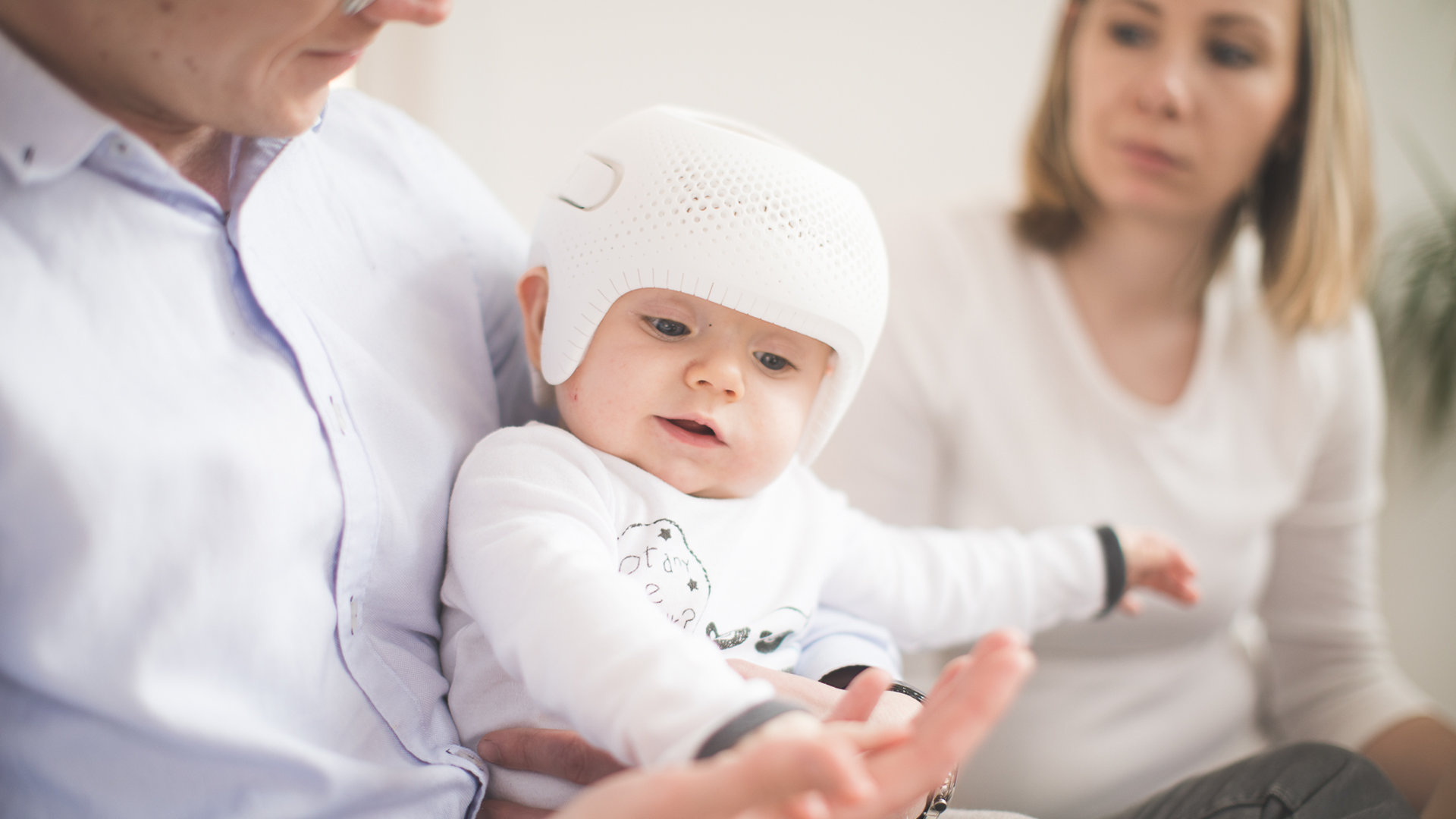
When weighing up the pros and cons of plagiocephaly helmet treatment, many parents ask us whether there is a risk of the condition returning once it has been corrected. We have also found that some parents whose babies are reaching the end of their treatment are also wondering this. However, we’re pleased to reassure parents that plagiocephaly will not return after helmet treatment.
Why Plagiocephaly Won’t Return After Treatment
Having treated babies with flat head syndrome since 1993, we are not only confident that plagiocephaly won’t return after treatment due to various developmental reasons, but also because we have knowledge and experience that this is very rarely the case.
One of the key reasons why plagiocephaly won’t return after treatment is because infants are much more mobile and are able to sit, crawl, and roll over by the end of their treatment. This means that there is far less continual pressure being applied to one area of their head.
As well as a baby’s mobility meaning that plagiocephaly is unlikely to return after treatment, changes in the structure of a baby’s head also makes them less susceptible to deformation from pressure. As babies get older, the plates within the skull start to become firmer and therefore more resistant to moulding from external pressures. This means that a baby’s skull is firm enough to resist deformity from the normal pressures that they encounter.
If your baby continues to have torticollis (a tightening of the neck muscles on one side), we always recommend stretches and repositioning techniques to ensure that the condition will be resolving at the end of a baby’s treatment. This leaves little chance of regression occurring even if your baby tends to turn towards the flattened side. For more information about Torticollis, we have put together an informative video that talks through an overview of the condition.
To assess the effectiveness of helmet treatment and the chances of regression after treatment, a study of 285 patients assessed anthropometric measurements that were taken 18 and 24 months after treatment. The study shows that correction from the treatment remained stable and with no regression. A further study showed that cranial orthoses is a safe and effective method for reducing cranial asymmetries, with no evidence of regression after treatment.
So, if you’re considering trying a helmet for flat head syndrome, you can be assured that this is not just a short-term solution. Once the head shape has been corrected, it will remain that way for the rest of your child’s life.
When Can Babies Start Helmet Treatment?
For many parents, knowing that investment in helmet treatment means a permanent head shape correction helps to solidify the decision that this is the right thing for their baby. Typically, the babies that we see are between four and fourteen months old, and may just be starting to roll and gain sitting balances. The ideal age to start treatment for plagiocephaly is between 4 and 7 months of age, but babies can start treatment up to the age of 14 months. Results are influenced by age, with a quicker and fuller result being achieved if a baby has started treatment as soon as they reach a suitable age to do so.
For babies that aren’t old enough to receive helmet treatment, we always recommend that parents use repositioning techniques. For babies under the age of four to five months, the skull is still soft and pliable and so is responsive to these techniques. In these cases, there is a good chance of improvement to a head shape through repositioning. If a head shape doesn’t begin to respond to these techniques quickly, then it’s doubtful that a significant improvement will be possible without additional help, which is when we recommend helmet treatment.
If you would like to find out more information about helmet treatment for plagiocephaly, contact a member of our friendly team to have a chat or book an appointment.


